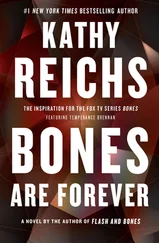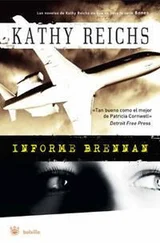Kathy Reichs - Grave Secrets
Здесь есть возможность читать онлайн «Kathy Reichs - Grave Secrets» весь текст электронной книги совершенно бесплатно (целиком полную версию без сокращений). В некоторых случаях можно слушать аудио, скачать через торрент в формате fb2 и присутствует краткое содержание. Жанр: Старинная литература, на английском языке. Описание произведения, (предисловие) а так же отзывы посетителей доступны на портале библиотеки ЛибКат.
- Название:Grave Secrets
- Автор:
- Жанр:
- Год:неизвестен
- ISBN:нет данных
- Рейтинг книги:4 / 5. Голосов: 1
-
Избранное:Добавить в избранное
- Отзывы:
-
Ваша оценка:
- 80
- 1
- 2
- 3
- 4
- 5
Grave Secrets: краткое содержание, описание и аннотация
Предлагаем к чтению аннотацию, описание, краткое содержание или предисловие (зависит от того, что написал сам автор книги «Grave Secrets»). Если вы не нашли необходимую информацию о книге — напишите в комментариях, мы постараемся отыскать её.
Grave Secrets — читать онлайн бесплатно полную книгу (весь текст) целиком
Ниже представлен текст книги, разбитый по страницам. Система сохранения места последней прочитанной страницы, позволяет с удобством читать онлайн бесплатно книгу «Grave Secrets», без необходимости каждый раз заново искать на чём Вы остановились. Поставьте закладку, и сможете в любой момент перейти на страницу, на которой закончили чтение.
Интервал:
Закладка:
Locating the entry, Ryan held the book out so I could read.
On May 16 Nordstern scheduled a meeting with Elias Jiménez.
I thought back.
“That was two days before his interview with me.”
I chewed and swallowed. The former was a formality.
“Who’s Elias Jiménez?” I asked.
“Professor of cell biology at San Carlos University.”
“Was the interview taped?”
“It isn’t on any of the cassettes I’ve been through.”
“Is the professor about to enjoy the pleasure of our company?”
“As soon as Detective Galiano is free.”
“Intimidated by academia?”
“I’m a visiting cop in a foreign land. No authority. No weapon. No support. I might as well be a journalist.”
“And a strictly by-the-book kind of guy.”
“Straight arrow.”
I pushed the fish as far from me as possible.
“Jumping genomes! Another ride in the Batmobile!”
On the way to Ciudad Universitaria in Zone 12, Galiano updated Ryan and me on the afternoon’s progress. There was little to report concerning Jorge Serano. The kid had a thick jacket, mostly minor offenses. Shoplifting. Vandalism. Drunk driving. But Jorge hadn’t stuck around to discuss past indiscretions. He’d vanished like money into a wahala.
Galiano’s partner had researched Antonio Díaz.
Hernández discovered that the DA had been an army lieutenant in the early eighties, served most of his hitch near Sololá. His commanding officer was Alejandro Bastos.
Terrifico.
Hernández also learned that a number of high-ranking police officials had served under Bastos.
Mucho terrifico.
Professor Jiménez’s address was in Edificio M2, a blue and white rectangular affair in the center of campus. We followed the signs to Ciencias Biológias, and located his office on the second floor.
The thing I remember about Jiménez is the goiter. It was the size of a walnut and the color of a plum. Otherwise, all I retain is the impression of a very old man with intense black eyes.
Jiménez didn’t rise when we appeared. He merely watched us troop through his door.
The office was approximately six by eight. The walls were covered with color photos of cells in various stages of mitosis. Or meiosis. I wasn’t sure.
Jiménez didn’t give Galiano a chance to speak.
“The man came asking about stem cells. I gave him a synopsis and answered his questions. That’s all I know.”
“Olaf Nordstern?”
“I don’t remember. He said he was researching a story.”
“What did he ask?”
“He wanted to know about the embryonic stem cell lines President George Bush approved for research.”
“And?”
“I told him.”
“ What did you tell him?”
“According to the NIH—”
“National Institutes of Health,” I translated.
“—seventy-eight lines exist.”
“Where?” I asked.
Jiménez dug a printout from a stack of papers and handed it to me. As I skimmed the names and numbers, Galiano got a crash course on stem cell research.
BresaGen Inc., Athens, Georgia, 4;
CyThera Inc., San Diego, California, 9;
ES Cell International/Melbourne, Australia, 6;
Geron Corporation, Menlo Park, California, 7;
Göteborg University, Göteborg, Sweden, 19;
Karolinska Institute, Stockholm, Sweden, 6;
Maria Biotech Co. Ltd.—Maria Infertility Hospital Medical Institute, Seoul, Korea, 3;
MizMedi Hospital—Seoul National University, Seoul, Korea, 1;
National Centre for Biological Sciences / Tata Institute of Fundamental Research, Bangalore, India, 3;
Pochon CHA University, Seoul, Korea, 2;
Reliance Life Sciences, Mumbai, India, 7;
Technion University, Haifa, Israel, 4;
University of California, San Francisco, California, 2;
Wisconsin Alumni Research Foundation, Madison, Wisconsin, 5.
My attention ricocheted back to the third listing. Quietly, I showed it to Ryan. His eyes met mine.
“Is seventy-eight enough?” Galiano asked, having listened to ES cells 101.
“Hell, no.”
Jiménez had an odd way of dropping his head to the left when he spoke. Perhaps the goiter pressed on his vocal cords. Perhaps he wanted to hide it.
“Some of those lines could get stale, or lose their pluripotency, or just plain crash. Four of the six colonies created by one U.S. biotech firm, won’t say which one, are turning out to be unstable.” Jiménez snorted. “There’s already a backlog of requests.”
He pointed a bony finger at the printout in my hand.
“And take a look at that list. Many of those lines are in private hands.”
“And private companies aren’t known for sharing.” Ryan.
“You’ve got that right, young man.”
“Is the American government doing anything to assure access?” Galiano asked.
“The NIH is creating a human embryonic stem cell registry. Still, NIH admits distribution of cell lines will be left to the discretion of those labs that birthed them.”
“ES cells could become a valuable commodity.” Ryan.
Jiménez’s laugh sounded like a cackle.
“Stem cell stocks soared following Bush’s announcement.”
A very troubling conjecture was coalescing in the back of my brain.
“Dr. Jiménez, how sophisticated is the methodology for growing cultures of human ES cells?”
“You’re not going to do it in your sophomore biochem class, if that’s what you’re asking. But it’s not that complicated for someone with training.”
“How does it work?”
“You get fresh or frozen embryos—”
“Where?”
“IVF labs.”
“Clinics for couples undergoing treatment for infertility,” I translated for my police buddies.
“You extract cells from the inner cell mass of the blastocyst. You put the cells in culture dishes with growth medium supplemented with fetal bovine serum—”
My heart rate shot to the stratosphere.
“—on feeder layers of mouse embryonic fibroblasts that have been gamma-irradiated to prevent their replication. You let the cells grow nine to fifteen days. When the inner cell masses have divided and formed clumps, you dissociate cells from the periphery, put them back in culture, and—”
I was no longer listening. I knew what Zuckerman was up to.
I caught Ryan’s eye and indicated that we should go.
Jiménez droned on about an alternative technique involving the injection of ES cells into the testes of immunocompromised mice.
“Thank you, Professor,” I cut in.
Ryan and Galiano looked at me like I was crazy.
“One last question. Did Nordstern ask about a woman named Maria Zuckerman?”
“Might have.”
“What did you tell him?”
“Same thing I’ll tell you, young lady. Never heard of her.”
“Zuckerman’s trying to develop a stem cell line.”
We were back in the Batmobile. My face felt hot, and strange creatures were running patterns in my belly.
“Why?” Ryan asked.
“How the hell should I know? Maybe she’s the one bucking for a prize. Or there’s a black market out there.”
I closed my eyes. The lunch fish played on the back of my lids. I opened them.
“But I’m certain that’s what Zuckerman’s doing. I saw the lab, saw the fetal bovine serum.”
“There must be other uses for the stuff.” Galiano.
“Six of the existing stem cell lines are at the Monash Institute of Reproductive Biology in Melbourne, Australia.” I swallowed. “Zuckerman spent two years at a research institute in Melbourne. If you check, I bet Monash rings the bell.”
“But why?” Ryan repeated.
“Maybe Zuckerman anticipates a growing black market now that the U.S. government has turned ES cells into a limited resource by limiting government funding.” Galiano looked over at me. “Are you all right?”
Читать дальшеИнтервал:
Закладка:
Похожие книги на «Grave Secrets»
Представляем Вашему вниманию похожие книги на «Grave Secrets» списком для выбора. Мы отобрали схожую по названию и смыслу литературу в надежде предоставить читателям больше вариантов отыскать новые, интересные, ещё непрочитанные произведения.
Обсуждение, отзывы о книге «Grave Secrets» и просто собственные мнения читателей. Оставьте ваши комментарии, напишите, что Вы думаете о произведении, его смысле или главных героях. Укажите что конкретно понравилось, а что нет, и почему Вы так считаете.








